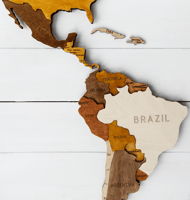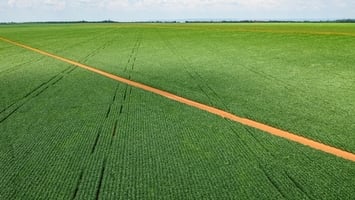Exploring the Economic Powerhouses of Latin America
The Brazilian economy in the last decade
Introduction
Brazil is the 9th largest economy (as of October 2023) in the world and has experienced significant growth, challenges and transformation over the past ten years. In an effort of explaining the process and highlighting the up’s and down’s of the country's economy, in the following sections we will discuss the crucial points and how they shaped the Brazilian economy.
I.Macroeconomic Performance:
First, on a macroeconomic level, the Brazilian economy has experienced a steady GDP Growth, witnessing a consistent economic growth over the last decade, with an average annual GDP growth rate of 2% to 3%. Alongside that factor, Brazil has actively diversified its economy, reducing its reliance on commodity exports and fostering the growth of service, manufacturing, and technology sectors.
The country has also implemented an effective list of monetary policies and fiscal measures, aiming to keep inflation within a reasonable range, while also ensuring stability and maintaining the confidence in the economy. All these actions occurred even when the country was facing the constant rising of inflation and unexpected variables like sudden change of governments and a pandemic.
II.Social and Income Inequality:
The past decade has been characterized by some sense of social insecurities against which Brazil has made significant strides in reducing poverty rates, with initiatives such as Bolsa Família playing a crucial role in improving social welfare and alleviating poverty. But, despite progress in poverty reduction, income inequality remains a persistent challenge. The government has implemented targeted policies and social programs to address this issue and promote greater income equality.
III.Infrastructure Development
The Brazilian Government has made substantial investments in infrastructure projects, aiming to improve transportation networks, energy systems, and telecommunications. These endeavors have bolstered productivity, connectivity, and regional integration. Alongside these initiatives the hosting of major international sporting events, including the FIFA World Cup in 2014 and the Olympic Games in 2016, provided opportunities for infrastructure development and tourism promotion, contributing to Brazil's economic growth.
IV.Energy and Environmental Sustainability
The South American country has demonstrated remarkable progress in renewable energy, particularly through the expansion of hydropower capacity and the development of wind and solar energy sources. Given this reality, we can highlight the fact that the majority of Brazil’s energy matrix comes from renewable energy sources, which comes as an advantage and a wide step towards the energetic transition.
See also our post about the Trends in Energy Sector in Latin America:
On the other side, Brazil continues to grapple with environmental challenges such as deforestation in the Amazon rainforest and the Cerrado biome. Addressing these issues requires concerted efforts towards conservation and sustainable land use practices that have to come from government officials with an active participation of the civil society.
V.International Trade and Investment
In the past decade, the country, with its strategic position and power in regional and global terms, has actively pursued trade liberalization, engaging in international trade agreements and expanding its export markets, particularly in commodities such as soybeans, iron ore, and oil.
The Brazilian government and private initiative have been spending a great amount of work on attracting foreign direct investment in various strategic sectors, including energy, manufacturing, and services. This has led to many positive outcomes such as job creation, technology transfer, and economic growth. However, FDI inflows have been subject to fluctuations due to both domestic and global economic unstable conditions.
See also our blog post about the EU Mercosur Trade agreement
VI.Challenges and Future Outlook
Brazil's political and governance challenges have greatly impacted policy stability and economic decision-making processes. Efforts towards transparency, corruption reduction, and strengthening institutions are crucial for sustained progress in the years to come and should be a top priority for the country’s strategic engagement and action plan.
On the fiscal side, the country grapples with fiscal constraints, including high public debt levels. This scenario shows how the process of implementing fiscal reforms is essential in terms of ensuring long-term fiscal sustainability and creating opportunities for productive investments.
Another relevant point must be the prioritization of innovation, productivity, and competitiveness so they can foster the country’s sustained economic growth. This process includes investments in research and development, promoting entrepreneurship, and cultivating a favorable business environment.
Conclusion
Brazil's economy has witnessed notable progress over the past decade, marked by steady growth, poverty reduction, infrastructure development, and renewable energy expansion. However, income inequality, governance challenges, fiscal constraints, and the need for innovation remain critical areas that demand attention. By addressing these challenges head-on, Brazil can unlock its economic potential and pave the way for inclusive and sustainable development in the years to come.


